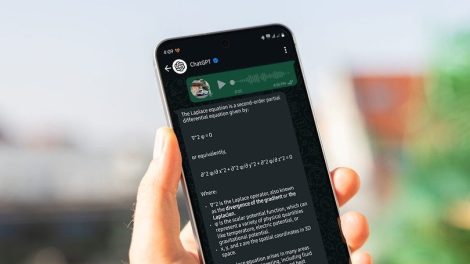WhatsApp continues to evolve as one of the most popular messaging platforms, serving billions of users worldwide. In its latest update, the platform has rolled out a feature that could significantly enhance user convenience—voice message transcripts. This development caters to the growing need for accessibility and flexibility in communication, allowing users to convert spoken words in voice messages into text.
This innovative addition positions WhatsApp as a leader in messaging app functionality, potentially changing the way users interact with voice messages. Whether you’re in a meeting, commuting, or simply unable to listen to audio messages, this feature can provide seamless access to content without disrupting your activities.
How Voice Message Transcripts Work
Voice message transcription is an automated process that converts the audio content of a message into written text. This new feature uses advanced speech recognition technology to deliver accurate transcripts that align with the context and tone of the message. Once the transcription is complete, users can read the message directly in the chat window.

This functionality is built into WhatsApp’s interface, ensuring that users don’t need to rely on third-party apps or services for transcription. By keeping this feature within its ecosystem, WhatsApp provides an added layer of security and convenience.
Enhancing Accessibility
The introduction of voice message transcripts addresses a critical aspect of modern communication: accessibility. For individuals who are hearing impaired or those in noisy environments, reading a transcription can be far more practical than listening to an audio file.
Additionally, users who receive messages in their non-native language might find this feature useful, as they can combine transcription with WhatsApp’s built-in translation capabilities to understand the content more effectively.
Situations Where Transcriptions Prove Useful
The practical applications of this feature are vast. Consider scenarios where listening to voice messages is inconvenient, such as during a work meeting or in public spaces. With transcriptions, you can discreetly read the content of the message without needing headphones or worrying about disturbing others.
Moreover, the feature is especially useful for users who receive long or detailed voice messages. Instead of replaying the audio multiple times to grasp the information, you can skim through the transcript and even copy relevant parts for reference.
Privacy Concerns
Privacy has always been a cornerstone of WhatsApp’s functionality, and this feature is no exception. The app uses on-device processing to generate transcripts, meaning the audio data does not leave your device. This ensures that the process aligns with WhatsApp’s commitment to end-to-end encryption and user security.
However, users should be aware that the quality of transcription may vary based on factors like the clarity of the voice message, background noise, and the speaker’s accent or language.
Comparison with Competitors
WhatsApp’s move to introduce voice message transcripts places it in competition with other platforms like iMessage and Telegram, both of which have implemented similar features. By integrating this capability, WhatsApp ensures it remains relevant and continues to meet user expectations in a competitive market.
While competitors may offer comparable transcription services, WhatsApp’s extensive user base gives it a distinct advantage. Its commitment to privacy, coupled with its seamless interface, ensures a smooth experience that might outpace similar offerings from other platforms.
Technical Challenges
Developing a reliable transcription feature involves significant technical challenges, from handling various accents and languages to managing background noise and audio quality. WhatsApp’s engineers have likely relied on cutting-edge artificial intelligence (AI) and machine learning models to ensure that the transcriptions are both accurate and contextually relevant.
One of the challenges WhatsApp faces is making this feature universally effective across its diverse user base. Given the app’s global reach, it needs to support numerous languages and dialects, requiring advanced linguistic datasets and robust AI models.
Future Implications
The introduction of voice message transcripts could pave the way for other text-based enhancements in WhatsApp. For instance, users might see features like keyword search within transcripts, which could help locate specific information in lengthy audio messages.
This development also sets the stage for broader integrations with AI-driven tools. For instance, WhatsApp could potentially offer sentiment analysis, summaries of long messages, or even smart replies based on transcriptions.
User Feedback and Rollout
As with any new feature, the success of voice message transcripts will largely depend on user feedback. Early adopters have praised its convenience, but WhatsApp will need to address potential shortcomings, such as errors in transcription or compatibility issues with older devices.
Currently, the feature is being rolled out gradually, ensuring that bugs and other issues are resolved before a full-scale launch. This phased approach allows WhatsApp to fine-tune the feature based on real-world usage.
Impact on Communication Trends
This feature could influence broader communication trends by encouraging a hybrid approach to messaging. Users who were previously hesitant to send voice messages due to accessibility concerns might now feel more inclined to use this medium.
Moreover, the feature bridges the gap between traditional text-based messaging and modern voice-based communication, making WhatsApp more versatile than ever.
WhatsApp’s introduction of voice message transcripts represents a significant milestone in the evolution of messaging platforms. By addressing accessibility and convenience, this feature enhances the overall user experience while maintaining the app’s commitment to privacy and security.
Whether you’re managing professional communications or keeping in touch with friends and family, voice message transcripts offer a practical solution to the challenges of modern messaging. As WhatsApp continues to innovate, features like this will likely play a pivotal role in shaping the future of digital communication.










Add Comment